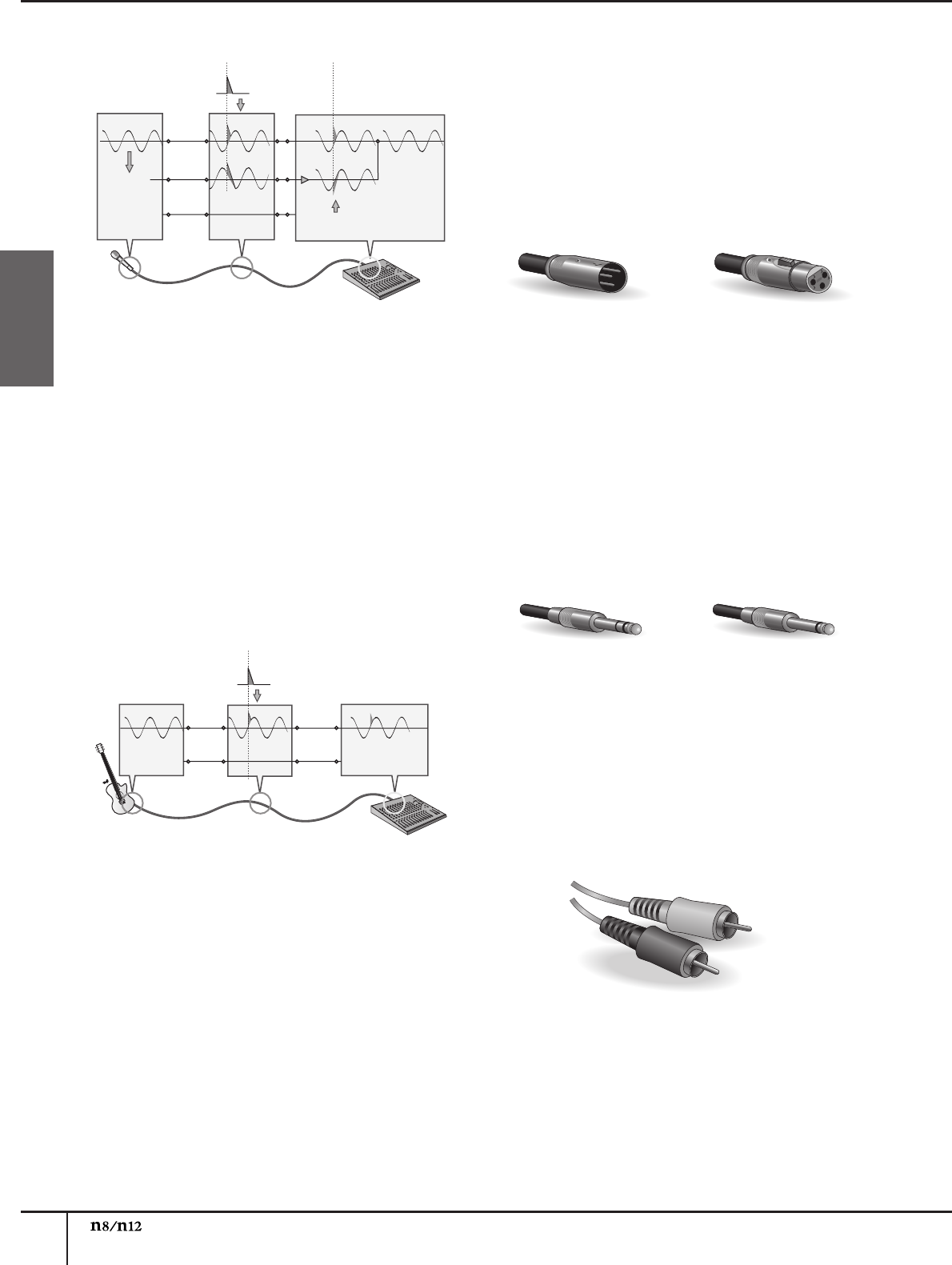
Recording Basics
Owner’s Manual
10
English
This is why balanced lines excel at rejecting noise.
How unbalanced lines work
Unbalanced connectors and cables are less expensive
than balanced cables. If the level of signals to be
transmitted is very high and/or the signal is not
susceptible to noise, or all connections are very short,
you can use unbalanced lines.
Monaural phone jacks and RCA pin jacks (which are
often used for consumer AV gear) are always
unbalanced. On an unbalanced line, signals travel
through a hot (+) conductor and a ground (GND)
conductor (which is a combination of cold and ground
conductors). Therefore, an unbalanced line does not
feature noise canceling (unlike a balanced cable).
However, the output signal level through unbalanced
jacks is usually high enough that using unbalanced
lines is just fine. You can also convert unbalanced
signals into balanced signals using a DI
(*)
.
(*)
A DI is a direct injection box that converts unbalanced
signals into balanced signals. For example, if you
connect an electric guitar to a mixer directly, the sound
may be thin or noise may be induced. In this case, you
can connect a DI between the instrument and the
mixer to convert the signal into a balanced one and
avoid a thin, noisy sound.
Connector Variations
Audio devices feature various types of connectors.
Questions you are likely to encounter when setting up a
system for the first time might include “Why all these
different types of connectors on the back of my mixer?”
and “What is the difference between various types of
connectors?”
Let’s start by taking a look at the most common types of
connectors.
XLR-type connectors
An XLR-type connector, which supports balanced lines,
is sturdy and less susceptible to deformation. The plug
features a lock mechanism, so even if you pull the
cable, it will not be disconnected. It is often used in
professional environments that demand a high level of
reliability.
When you connect an XLR cable, the ground conductor
on the XLR plug and XLR jack comes in contact first.
Therefore, unlike with an RCA pin cable or phone cable,
you can avoid pop noises when connecting an XLR
cable. Usually, male plugs will output and female plugs
will input.
Phone connectors
The name “phone” arose simply because this
configuration was first used in telephone switchboards.
Phone jacks can be stereo or monaural. A stereo phone
jack is also referred to as a “TRS” phone jack, and is set
up to handle stereo signals, such as for headphones,
and insert I/O signals. A stereo phone jack can also
handle balanced signals. A monaural phone jack is
unbalanced, and can be used to connect an electric
guitar or other instruments, to an amplifier.
RCA pin connectors
This type of unbalanced pin jack has been widely used
on home audio/video equipment for many years. The
plugs are color coded according to the signals they
carry. A white plug is used for the left audio channel,
and a red plug is used for the right audio channel.
noise
hot (+)
cold (–)
ground
(GND)
transmitter cable receiver
noise canceling
phase
inversion
phase
inversion
synthesized
signal
noise
transmitter cable receiver
male female
stereo/TRS phone plug mono phone plug
white
red


















